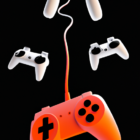In our fast-paced digital world, Gesture Recognition is becoming synonymous with the future of human-computer interaction. As technology evolves, so do the ways we engage with devices. From smartphones to sophisticated AI systems, gestures are increasingly becoming a preferred alternative to traditional input methods like keyboards and mice.
What is Gesture Recognition?
Gesture Recognition refers to the ability of a system to interpret human gestures via mathematical algorithms. These gestures may be spontaneous (like waving a hand) or deliberate (like pinching to zoom). By translating physical movements into command inputs, gesture recognition enhances user experiences, making technology more intuitive and interactive.
How Gesture Recognition Works
At its core, gesture recognition combines machine learning and computer vision. Techniques used include:
- Image Processing: Involves analyzing static images to detect gestures.
- Depth Sensing: Utilizes sensors that capture the dimensions of movements, allowing for 3D gesture recognition.
- Skeletal Tracking: Monitors the movements of skeletal points in real-time, enabling dynamic interactions.
Applications of Gesture Recognition
The applications of gesture recognition span across various sectors:
1. Entertainment:
Gesture-controlled gaming and virtual reality systems enhance the immersive experience, making players feel more connected to the game.
2. Healthcare:
Doctors can use gesture recognition in surgeries or for remotely monitoring patients, allowing for a hands-free approach that promotes hygiene.
3. Automotive:
Gesture recognition technology in vehicles enables drivers to control navigation and media systems without taking their hands off the wheel or their eyes off the road.
4. Smart Home Devices:
Gestures can control lighting, volume, and temperature in smart homes, creating a seamless living environment.
The Future of Gesture Recognition
With the rise of artificial intelligence and machine learning, the potential for gesture recognition is limitless. As the technology matures, we can expect:
- Improved accuracy and responsiveness in interpreting gestures.
- Integration with emerging technologies, such as augmented reality (AR) and the Internet of Things (IoT).
- Expanded use in everyday devices, further eliminating the need for physical interfaces.
Conclusion
Gesture recognition represents a significant leap forward in how we interact with technology. As it becomes more ingrained in our daily lives, understanding its mechanisms and potentials will be essential for both users and developers. Those who embrace gesture recognition will undoubtedly lead the way in creating more accessible and user-friendly technology.
For more insights into the latest technology trends, stay tuned to our blog!










